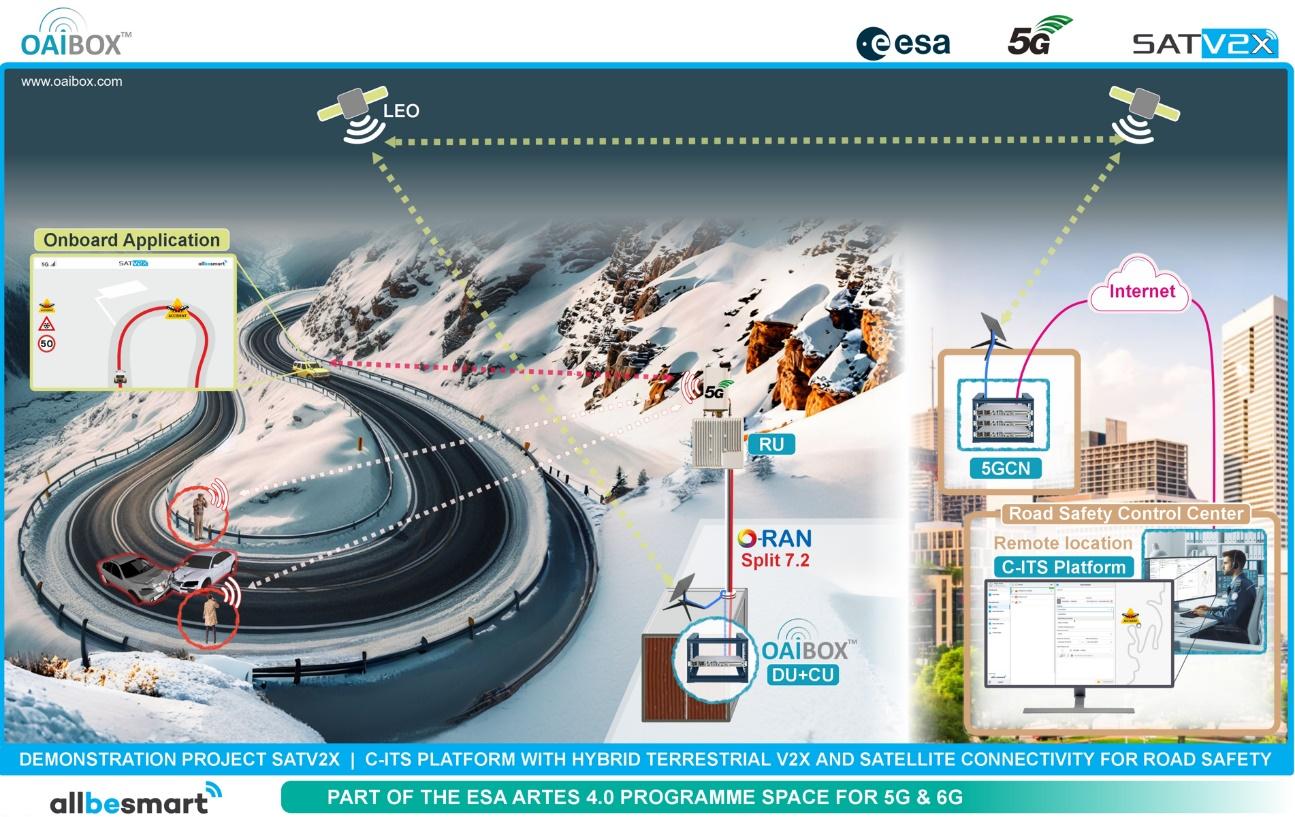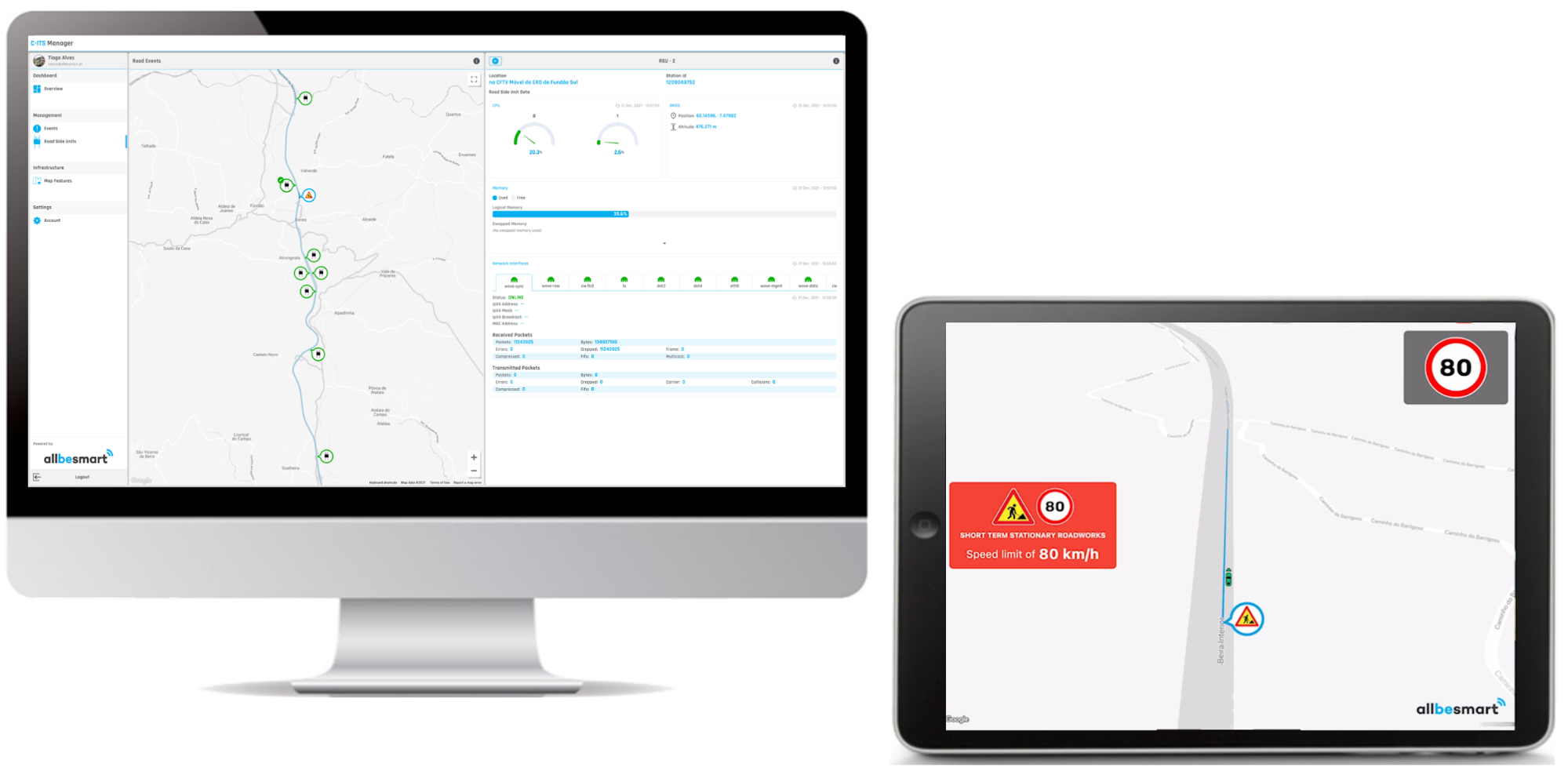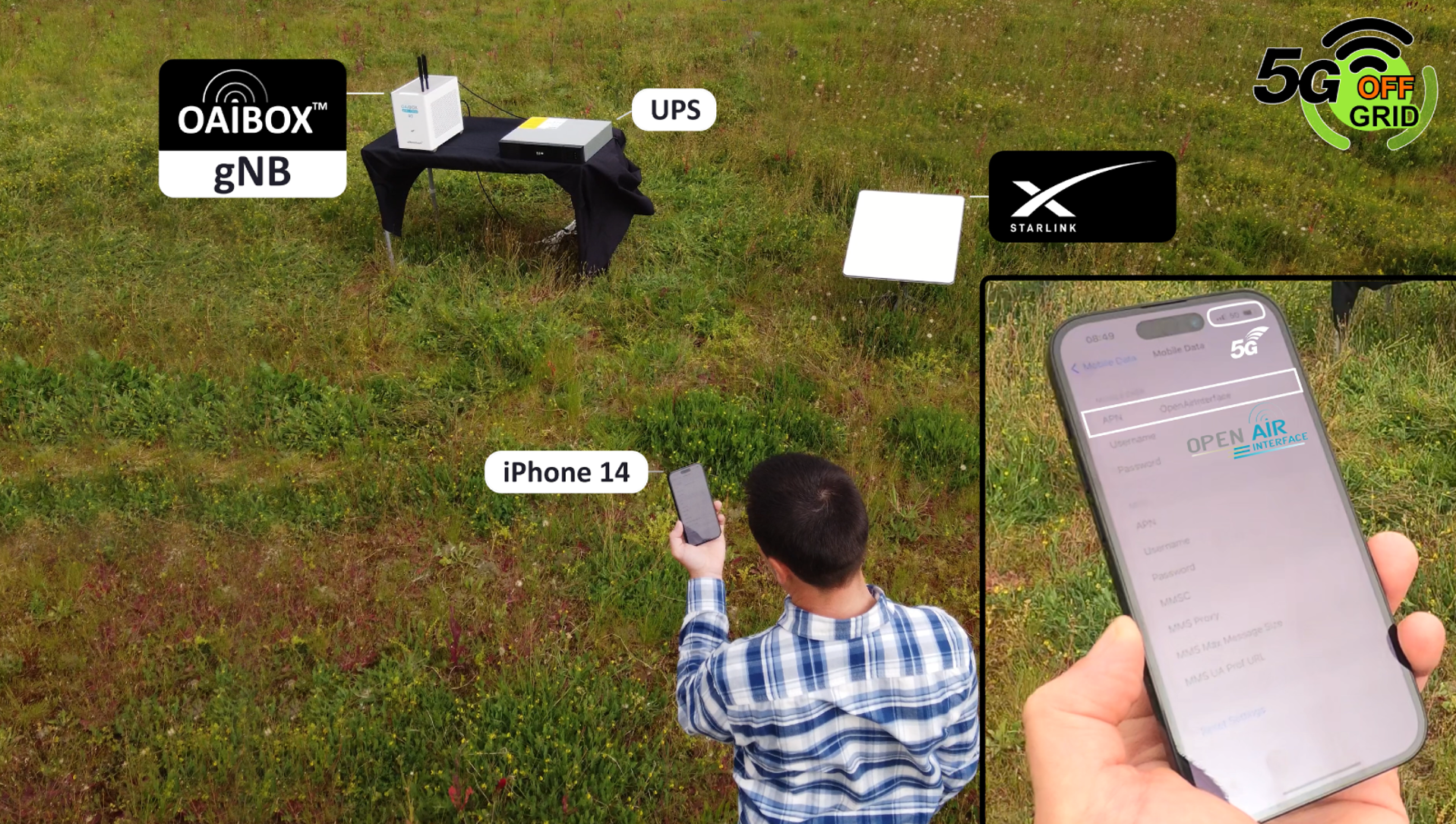
Objectives of the service

The main objective of SATV2X project is to enable a C-ITS Platform to communicate with vehicles in areas where terrestrial connectivity may be limited or unavailable through the integration of terrestrial 5G and satellite connectivity.
The C-ITS Platform allows road operators to easily create and broadcast warning messages through a powerful backoffice system. The messages are then visualized by an onboard application, or through the car infotainment system using 5G connectivity.
The project implements and validates a set of use cases that exploit the hybrid connectivity between terrestrial 5G and SatCom for critical C-ITS safety services.
Users and their needs
Today, many roads still suffer from insufficient cellular network coverage, making it unreliable for supporting Intelligent Transport Systems (ITS). As a result, critical vehicular communication services cannot depend solely on cellular networks. The C-ITS Platform with hybrid connectivity addresses the needs of road operators and traffic managers, who require:
-
Enhanced road safety
-
Reduced operational costs
-
A direct and digital communication channel with drivers
-
Opportunities to introduce advanced infotainment and value-added services
-
A future-ready communications infrastructure that supports autonomous driving.
Service/ system concept
The C-ITS Platform facilitates the exchange of safety, mobility, and environmental information between road infrastructure and vehicles through hybrid connectivity. Serving as the central communication hub, it aggregates and integrates data from both vehicles and roadside systems to improve traffic flow, enhance safety, reduce congestion, and lower carbon emissions.
The platform supports both manual and automated event-based broadcast messaging. C-ITS messages can be generated via a user-friendly dashboard or triggered automatically based on sensor data and predefined criteria. Together, the C-ITS backoffice system and the onboard application enable seamless end-to-end deployment of C-ITS use cases, abstracting technical complexities for road operators and traffic managers.

Space Added Value
The C-ITS Platform and associated C-ITS services relay on the following space technologies:
-
Satellite Communications: The project implements and validates a set of use cases that exploit the hybrid connectivity between terrestrial 5G and SatCom for critical C-ITS safety services. The pilot employs commercially available Low Earth Orbit (LEO) satellite connectivity due to its lower latency compared to traditional Geostationary Earth Orbit (GEO) systems.
-
Satellite Navigation: Accurate geolocation is essential for the exchange of safety-critical information. One fundamental element in C-ITS is positioning, extracting the vehicle’s absolute and relative positions concerning other objects such as buildings, pedestrians, traffic signs, and other vehicles. The pilot uses high-accuracy GNSS external receivers, enhanced with RTK (Real-Time Kinematic) augmentation, to meet these requirements.
Current Status
The project has successfully completed verification tests for the key components of the SATV2X system architecture. These tests covered satellite backhauling performance for supporting 5G cellular connectivity, compliance with 3GPP and C-ITS standards, handovers and mobility, 5G network slicing for V2X services, GNSS-based time synchronization for 5G fronthaul, and the usability of the C-ITS platform. All system components were validated against the defined system requirements. The project has now entered the full system integration phase and initiated pilot deployment in the A23 Beira Interior highway in Portugal.




